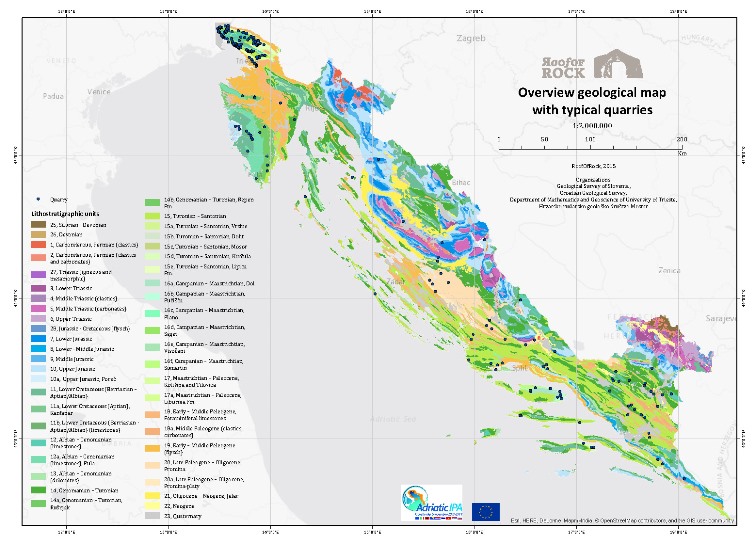Platy limestone – geologic definition and its use as a mineral commodity
Jernej Jež, Uroš Barudžija, Sara Biolchi, Stefano Devoto, Goran Glamuzina, Tvrtko Korbar
The north-eastern Adriatic coastal area is part of the Dinaric Karst region, the world famous area of typical karstic geomorphological features developed within tectonically deformed and eroded carbonate sedimentary rocks (mostly limestone and dolomite), deposited within a broad Adriatic/Dinaric carbonate platform. The majority of the carbonates cropping out in the region have been deposited during the Mesozoic era, some 200 to 66 million years (My) before present, from the Late Triassic to the end of the Cretaceous (Vlahović et al., 2005 and references therein). The whole region was a part of the Adria, a northern promontory of the African continent, which was located during the Mesozoic approximately 2,000 kilometres to the south, within a (sub) tropical climate belt. Younger carbonate and siliciclastic rocks were deposited later, at the beginning of the Cenozoic period (66 My ago) when Adria collided with Europe. The uplifted rocks were eroded and material begun to accumulate over the carbonate platform deposits, within the so-called foreland basins (Korbar, 2009 and references therein).
During the Cretaceous, a shallow water area spread over the Adriatic/Dinaric carbonate platform, and was encompassed by intervening deep marine basins within the Tethys Ocean (the present day Mediterranean), a situation similar to the present day Bahamas. A variety of depositional environments can be found within such an area, in which various limestone lithotypes were deposited. The diverse topography of the platform enabled the co-existence of lowlands (islands) as well as intraplatform depressions/deeper lagoons. The latter were very favourable for the deposition of very thin-bedded (platy) limestone. Later during the Cenozoic, carbonates were deposited during short time intervals only.
The investigated Dinaric Karst is tectonically heavily deformed. The NE Adriatic region is especially characterized by a wide belt of folds (anticlines and synclines) and reverse faults, which strike mostly in the NW-SE (so-called Dinaric) direction.











